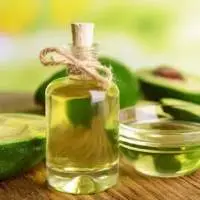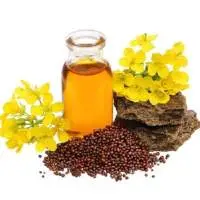

SunCo is made from selected fresh palm fruit which is directly processed through 5 process stages, namely 2 filtering processes and 3 prevention processes to produce good cooking oil with the following evidence: 1. Most Clear It doesn't turn black quickly and doesn't oxidize easily, thereby minimizing the risk of cancer 2. His character is like water Through organoleptic tests, SunCo was proven to flow easily and not stick to the throat. 3. Not Easy to Freeze SunCo is a cooking oil with low saturated fatty acid content, thereby minimizing the increase in bad cholesterol (LDL). Available in various packaging: - Refill 500 ml - Refill 1 Liter - Refill 2 Liter - Bottle 1 Liter - Bottle 2 Liter - Bottle 5 Liter - Jerrycan 5 Liter
DESCRIPTION. Our Black Sesame Oil is sourced from Tamil Nadu and is ideal for those looking for a natural and healthy alternative to refined oils. The no-heat cold pressing method ensures that it is rich in vitamins, minerals, antioxidants, and other essential elements that make it a healthy choice.
Is olive pomace oil healthy? Yes, It's Made Up Of Healthier Fats Olive Pomace Oil is still made 100% from olives, which means that the make up of lipids are still the same as in other olive oils. All olive oil has a high level of monounsaturated fats (the healthy fats) and a low level of saturated and polyunsaturated fats.
Sesame oil made from seeds that have not been toasted is a pale yellow liquid with a pleasant grain-like odor and somewhat nutty taste, and is used as frying oil. Oil made from pressed and toasted sesame seeds is amber-colored and aromatic, and is used as a flavoring agent in the final stages of cooking.
Olive oil is the oil that comes from the fruit of the olive tree (Olea europea). Virgin olive oil is produced by mechanical processing of the olive fruit in olive mills. It is a key element of the Mediterranean diet and is considered a healthy food product due to its content of monounsaturated fats, antioxidants, etc. Physical and chemical characteristics Crude virgin olive oil is a mixture of various ingredients. These can be distinguished into three categories: Glycerides, fat-soluble substances and water-soluble substances. They can also be distinguished into saponifiable and non-saponifiable components. Glycerides, which are also saponifiable components, are mainly triglycerides, i.e. esters of glycerol with fatty acids. The latter are mainly: oleic, palmitoleic, linoleic, stearic and palmitic. The first three are unsaturated fatty acids, and the other two are saturated Historical data In the Greek area, presses for the production of oil from olives and containers (jars) for oil storage dating from the Mycenaean era have been found. According to the excavations carried out in the Proto-Cycladic II (2,700-2,300 BC) cemetery of Spedos in 1903 by Klonos Stefanos, among the other finds, he mentions a silver-plated clay vessel which contained traces of spoiled olive oil. The careful research in the chemistry of the National University under Professor K. Zengeli proved, beyond doubt, the existence of olive oil. Klonos Stefanos (in the Proceedings of the Archaeological Society PAE 1906) notes that together with the silver-plated clay vessel, a triple clay oil lamp was found. Olive oil is referred to on a Linear B tablet from Knossos as erawo (oil) and on others with a special ideogram. Olive oil and health Olive oil contains high levels of monounsaturated fatty acids (MUFA) as well as an abundance of bioactive components. Of these, the phenolic components are the most extensively studied. Regarding the benefits of MUFAs in human health, the US Food and Drink Administration authorized qualitative health claims (health claims), for the first time in 2004, regarding the protection offered by monounsaturated fatty acids of olive oil against cardiovascular risk diseases. Overall, the benefits of olive oil fatty acids were summarized at the first International Conference on Olive Oil and Health, in 2005. But olive oil is more than a rich source of monounsaturated fatty acids. Its phenolic components have shown anti-inflammatory and chemo-protective properties. Oleocanthal in olive oil has been found to have a similar effect to the anti-inflammatory drug ibuprofen. In none of the studies in which the role of phenolic components of olive oil has been examined, cytotoxicity has been shown.
Appearance: pure, refined, without sediments and with a light yellow color Taste and odor: Deodorized with good taste Saponification index 188,0 195,0 IRAM 5516 / ISO 3657 Unsaponificable matters Max. 0,7 % ISO3596 Acidity (80% oleic) Max. 0,07 % IRAM 5512 / ISO 660 Soap (ppm oleate of sodium) Max. 7ppm IRAM 5599 Index of peroxides (meq O2/Kg) Max. 4meg/kg IRAM 5551 / ISO 3960 Color: IRAM 550 Yellow Lovibond (5) Max. 12 ISO 15305
The Avocado has content of Vitamin A B C D E and also Beta carotene The oil can be very much suitable for treating skin and hair thats been damaged by Sun or has become dry for some reason Avocado oil is also added to some other carrier oils in percentage of 510 to make it richer in vitamins This oil is mostly used in making of lotions creams and soaps
Mustard is a kind of table sauce which is made from the mustard plant. The mustards are often mixed with water lime, lemon, vinegar, and other liquids salts and often other flavoring agents to create sauces. The taste of mustard ranges from sweet to spicy. Mustard oil is extracted from the seeds of mustard. The mustard oil can be produced by Black mustard, white mustard, and brown Indian mustard. The pungency of mustard seed oil depends on their mixing with vinegar, water, or other liquid.
Sunflower plants belong to the Asteraceae family of Plantae kingdom This annual herb grows to a height of 3m The leaves are broad and mostly arranged in alternate manner Flower head also known pseudanthium is actually group of many individual 5petals flowers and is referred as flower of the sunflower plant These flowers are used to extract oils from it that are rich in vitamin E mono and polysaturated fatty acids Benefits of Sunflower Carrier Oil
CARRIER OILS DESCRIPTION We offer you a wide range of carrier oils, each with its unique texture, aroma, and wellness benefits. Carrier oils are thick in consistency that is used as a medium to transfer myriad essential oils, body butters, or any other substance to the body cells. Their texture allows them to be absorbed well by outer layer of body and reaches all the wellness benefits. We carry out intensive R&D to bring forth an extensive range of carrier Oil. Carrier oils are often vegetable oils made from a plant's seeds, kernels, or nuts, such as coconut oil or avocado oil. Essential oils are "carried" to your body via carrier oils after being diluted. Since essential oils are far too strong to apply topically, base oils are used to dilute them before topical application. They also help to get desirable consistency in diverse make-up items. Carrier oils provided by carrier oil suppliers are an integral part of many daily used end products. Besides, these oils are extensively used for direct apply on out layer of body for miniaturization and more benefits. The restorative effects of essential oil are not affected by most carrier oils, which are often odourless or only mildly perfumed. Now it does not mean that career oils do not have any individual characteristics. They are loaded with amazing properties for body and can be used on their own and in combination with other oils to hydrate outer layer of the body. Due to their ability to stick to the body, carrier oils are also known as "fixed oils." This makes them perfect for controlling essential oil concentration and make less the strength of an essential oil's aroma without affecting its properties. To maximize the effects and utility of the essential oils as well as control the finished product's color, scent, aromatic characteristics, and shelf life, etc. Carrier oil is an essential component for the makeup and aromatic industries.








